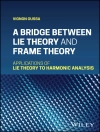This book offers the first systematic account of canard cycles, an intriguing phenomenon in the study of ordinary differential equations. The canard cycles are treated in the general context of slow-fast families of two-dimensional vector fields. The central question of controlling the limit cycles is addressed in detail and strong results are presented with complete proofs.
In particular, the book provides a detailed study of the structure of the transitions near the critical set of non-isolated singularities. This leads to precise results on the limit cycles and their bifurcations, including the so-called canard phenomenon and canard explosion. The book also provides a solid basis for the use of asymptotic techniques. It gives a clear understanding of notions like inner and outer solutions, describing their relation and precise structure.
The first part of the book provides a thorough introduction to slow-fast systems, suitable for graduate students. The second and third parts will be of interest to both pure mathematicians working on theoretical questions such as Hilbert’s 16th problem, as well as to a wide range of applied mathematicians looking for a detailed understanding of two-scale models found in electrical circuits, population dynamics, ecological models, cellular (Fitz Hugh–Nagumo) models, epidemiological models, chemical reactions, mechanical oscillators with friction, climate models, and many other models with tipping points.
Cuprins
Part I Basic Notions.- 1 Basic Definitions and Notions.- 2 Local Invariants and Normal Forms.- 3 The Slow Vector Field.- 4 Slow-Fast Cycles.- 5 The Slow Divergence Integral.- 6 Breaking Mechanisms.- 7 Overview of Known Results.- Part II Technical Tools.- 8 Blow-Up of Contact Points.- 9 Center Manifolds.- 10 Normal Forms.- 11 Smooth Functions on Admissible Monomials and More.- 12 Local Transition Maps.- Part III Results and Open Problems.- 13 Ordinary Canard Cycles.- 14 Transitory Canard Cycles with Slow-Fast Passage Through a Jump Point.- 15 Transitory Canard Cycles with Fast-Fast Passage Through a Jump Point.- 16 Outlook and Open Problems.- Index.- References.
Despre autor
Peter De Maesschalck, born in 1975, has been at Hasselt University, Belgium, for much of his career. His research focuses on slow-fast systems in low dimensional systems both from a qualitative point of view and from the point of view of asymptotic expansions. Part of his research is inspired by theoretical questions such as Hilbert’s 16th problem on limit cycles of polynomial systems, another part is motivated by applications of slow-fast systems in, e.g., neurological models.
Freddy Dumortier, born in 1947, emeritus professor at Hasselt University, is former president of the Belgian Mathematical Society and is currently permanent secretary of the Royal Flemish Academy of Belgium for Science and the Arts. He is the author of many papers and his main results deal with singularities and their unfolding, bifurcation theory, Liénard equations, Hilbert’s 16th problem, slow-fast systems and the wave speed in reaction-diffusion equations.
Robert Roussarie, born in 1944, is emeritus professor of the University of Bourgogne-Franche Comté. After a career at the CNRS he was professor at the Institut de Mathématique de Bourgogne. He worked on the theory of foliations, of singularities in differential geometry, bifurcations of vector fields and finally slow-fast systems. He also contributed to applied research on ferro-resonance in electrical networks, systems of ecological populations, systems in control theory and free interface problems in combustion theory.












